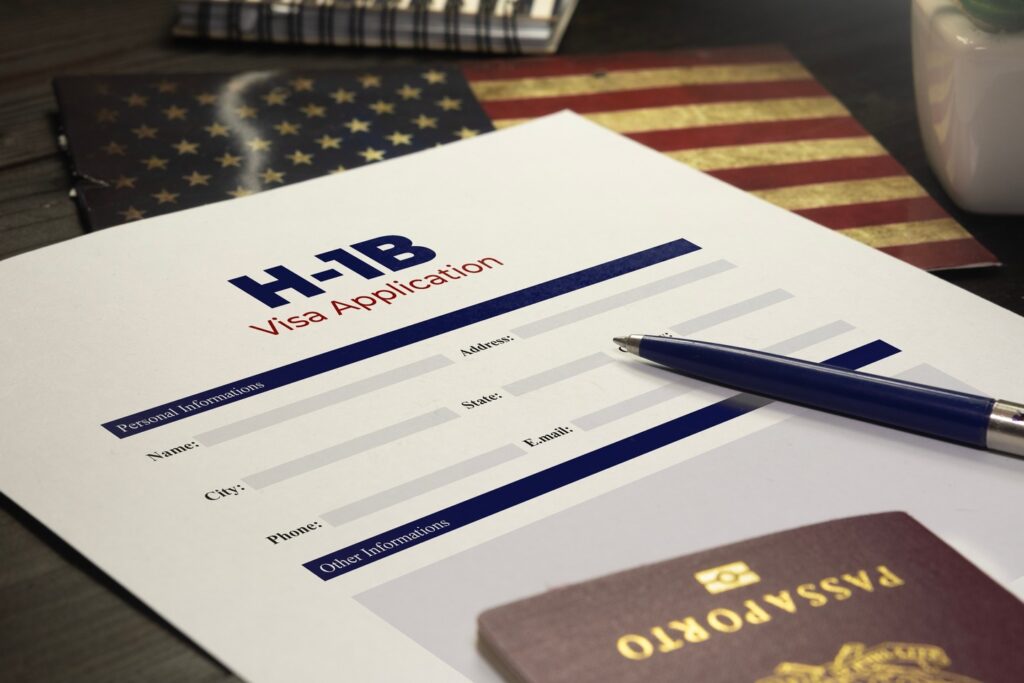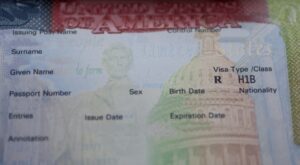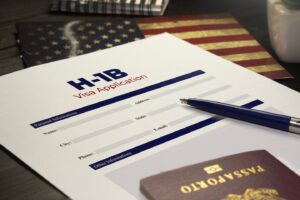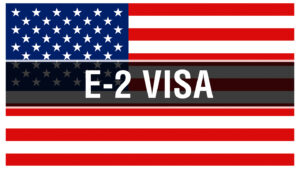Planning to work in the U.S.? Understanding H-1B visa requirements is crucial. This nonimmigrant classification is your pathway to a specialty occupation. However, the H-1B requirements visa application process can be complex. This guide breaks down everything you need to know about H-1B requirements for h1b application, from eligibility and application procedures to H-1B requirements, visa extensions, and potential policy changes.
Table Of Contents:
- Decoding the H-1B Visa: Who’s It For?
- H-1B Visa Extensions: Staying Longer
- The Impact of Politics: H-1B and Presidential Elections
- H-1B Visa Fees
- FAQs about h 1b visa requirements
- Conclusion
Decoding the H-1B Visa: Who’s It For?
The H-1B visa is for individuals seeking temporary employment in specialty occupations in the U.S. These jobs typically require at least a bachelor’s degree or equivalent. Common fields include science, technology, engineering, and mathematics (STEM).
However, the H-1B visa isn’t limited to STEM. The key is the specialized knowledge needed for the position. Review the USCIS H-1B webpage for a complete list of eligible professions.
H-1B Visa Requirements: Meeting the Criteria
Interested in a specialty occupation? Ensure you meet these key requirements for H-1B visa petition approval.
- Bachelor’s Degree or Higher: This includes a U.S. degree from an accredited institution, a foreign equivalent degree, or equivalent work experience and training with field recognition.
- Job-Specific Skills: The position requires specialized knowledge of your degree.
- Employer Sponsorship: A U.S. employer must sponsor you by filing Form I-129, Petition for a Nonimmigrant Worker, with USCIS. The employer first applies for Labor Condition Application (LCA) certification with the Department of Labor. This LCA (Form ETA-9035/9035E) is filed through the Department of Labor’s Office of Foreign Labor Certification. Upon approval, the certified LCA is included with Form I-129. This form is also used if you hold H-1B status and want to change employers or jobs with your current employer.
After USCIS approves the I-129 petition, the visa beneficiary completes Form DS-160, Application for a Nonimmigrant Visa. The H1B petition requirements ensure that the job and the foreign worker meet specific criteria, protecting both the U.S. labor market and the H-1B worker.
Navigating the Application Process: Steps to Take
These are the next steps once you and your employer confirm you meet all H-1B requirements. This entire registration process must be completed before a visa petition can be submitted.
Step | Action | Responsibility |
1 | File the LCA with the DOL | Employer |
2 | Submit Form I-129 to USCIS | Employer |
3 | Apply for Visa and/or Admission (If Outside the U.S.) | Employee |
After Form I-129 approval, those outside the U.S. apply for a visa at a U.S. embassy or consulate. Upon arrival in the correct location, they receive their Form I-94, Arrival/Departure Record, for the appropriate geographic area, documenting the admission to the U.S.
Navigating these steps for H-1B visa holders can be confusing. Watch our helpful video here for additional information. We also have another video on changing or extending the current visa status.
H-1B Visa Extensions: Staying Longer
H-1B visas usually last three years, extendable to a maximum of six. Extensions beyond six years are possible under certain conditions. This may include situations where you are in the permanent residence process (8 CFR 214.2(h)(13)(iii)(E)) and your current visa validity period will expire in under one year. In those situations, the proper form for status application may be filed.
Another scenario allowing an extension is for those possessing an approved labor certification and having less than 365 days remaining before their current H-1B status expires (8 CFR 214.2(h)(13)(iii)(D)).
The Impact of Politics: H-1B and Presidential Elections
Political shifts can significantly affect h 1b visa requirements. For example, the Trump administration implemented stricter immigration policies, leading to increased H-1B denial rates and tighter regulations. These included changes to how the prevailing wage is determined and more stringent requirements for specialty occupations.
While the Biden administration relaxed some of these restrictions, the fact remains: H-1B policies can shift with each administration. Stay informed on the latest policy developments. Being aware of potential changes is crucial, especially during renewals or new applications. It allows ample time to prepare and file based on the current h 1b visa employer requirements.
H-1B Visa Fees
Typical USCIS fees for an H-1B petition include:
- Anti-fraud fee ($500).
- Application fee ($460).
- Optional premium processing fee ($2,500 for expedited processing within 15 calendar days via USCIS).
Fee changes can and do occur. In certain situations, when an H-4 dependent concurrently files Form I-539, Application To Extend/Change Nonimmigrant Status, alongside Form I-129, additional fees apply. DHS fee changes took effect at the end of January 2024, affecting associated costs (source).
FAQs about h 1b visa requirements
Who is eligible for the H-1B visa?
Foreign nationals seeking work in a specialty occupation that requires theoretical and practical expertise. The individual must have a bachelor’s degree or higher degree or its foreign equivalent.
What are the entry requirements for an H-1B visa?
Entry requirements depend on each case’s specific facts, so be familiar with information from any valid government websites and resources.
Common requirements include H-1B visa approval and valid immigration paperwork, like the most recently issued Form I-94 (source), that displays current entry/exit records.
What are the requirements for H-1B visa processing?
Employers must file certain documentation, such as Form I-129 and supporting evidence, on behalf of the H-1B beneficiary. Additionally, before the I-129 can be approved, H1B beneficiaries often require any applicable US state and/or local licensing required to perform duties (8 CFR 214.2(h)(4)(v)(A)-(B)).
Those maintaining H1-B visa status for six years have specific renewal information available on USCIS.gov. This fact sheet includes essential h 1b requirements for employees and H1B extension requirements. Also, ensure all workers employed under the petition are being paid the correct prevailing wage rates in the specified geographic area and that the presence of H-1B nonimmigrant workers will not adversely affect the working conditions of workers similarly employed.
What is the new rule for H-1B visa?
H-1B rules change periodically. Staying current with information available on reliable websites such as the USCIS and DOL for updates is recommended. Understanding how to properly file forms like the I-129 during specific periods like cap season within the fiscal year and understanding specific H-1B job requirements, particularly for higher education and non-profit entities, is vital for those seeking to hire nonimmigrant workers.
Conclusion
The H-1B visa offers a path to employment in the U.S. for qualified foreign nationals. Securing visa petition approval involves understanding h 1b visa requirements and correctly completing all required forms. Ensure you are aware of the changes stemming from varying presidential administrations regarding the H-1B policy to complete the application or renewal process successfully.
UK marriage visitor visa requirements
Learn how to obtain an H-1B visa.




